-
 Bitcoin
Bitcoin $105,953.9980
3.06% -
 Ethereum
Ethereum $2,445.3292
6.68% -
 Tether USDt
Tether USDt $1.0006
-0.03% -
 XRP
XRP $2.1968
7.03% -
 BNB
BNB $643.2903
2.13% -
 Solana
Solana $144.2799
3.82% -
 USDC
USDC $1.0000
-0.03% -
 TRON
TRON $0.2739
0.49% -
 Dogecoin
Dogecoin $0.1642
4.47% -
 Cardano
Cardano $0.5834
5.49% -
 Hyperliquid
Hyperliquid $38.0741
2.80% -
 Sui
Sui $2.7741
7.56% -
 Chainlink
Chainlink $13.4107
11.26% -
 Bitcoin Cash
Bitcoin Cash $450.4828
-0.61% -
 UNUS SED LEO
UNUS SED LEO $9.1301
0.64% -
 Stellar
Stellar $0.2476
5.49% -
 Avalanche
Avalanche $18.0637
5.09% -
 Toncoin
Toncoin $2.9066
2.43% -
 Shiba Inu
Shiba Inu $0.0...01160
4.01% -
 Hedera
Hedera $0.1527
8.00% -
 Litecoin
Litecoin $84.6122
2.37% -
 Monero
Monero $317.6076
5.76% -
 Ethena USDe
Ethena USDe $1.0008
0.02% -
 Polkadot
Polkadot $3.4519
5.27% -
 Dai
Dai $1.0000
-0.03% -
 Bitget Token
Bitget Token $4.2835
5.62% -
 Uniswap
Uniswap $7.0443
9.78% -
 Pepe
Pepe $0.0...09964
7.41% -
 Pi
Pi $0.5391
4.64% -
 Aave
Aave $264.1743
11.26%
How to make a decision when the price breaks through but the UOS indicator shows a top divergence?
A price breakout combined with UOS top divergence creates conflicting signals, requiring confirmation from volume, candlesticks, and support/resistance levels before making trading decisions.
Jun 24, 2025 at 11:42 pm
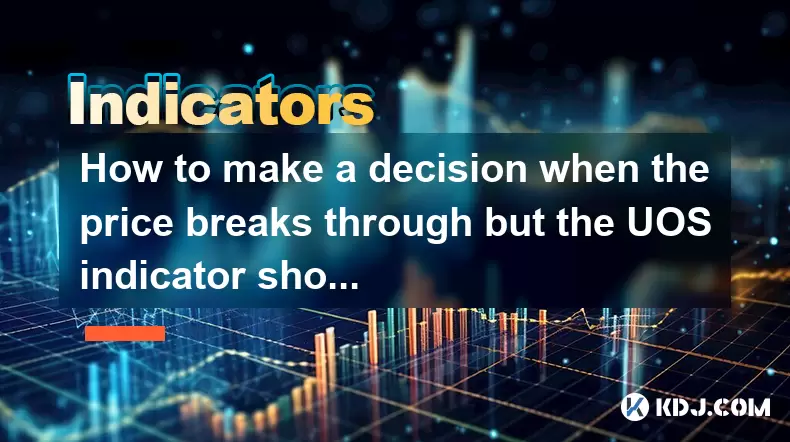
Understanding the UOS Indicator and Price Breakthroughs
The Ultimate Oscillator (UOS) is a momentum oscillator that combines multiple timeframes to provide a more accurate picture of market momentum. When traders observe a price breakthrough — where the price moves above a key resistance level — but the UOS indicator shows a top divergence, it creates a conflicting signal. A top divergence occurs when the price makes a higher high, but the UOS fails to confirm this with a lower high.
This situation often leads to confusion among traders about whether to enter a trade or hold off. The core issue lies in reconciling the bullish implications of the price breakout with the bearish warning from the UOS indicator.
What Is Top Divergence in the UOS?
Top divergence in the UOS is a sign of weakening upward momentum. It suggests that even though the price is rising, buyers are losing strength. This kind of divergence is typically seen as a precursor to a potential reversal.
When this happens during or after a price breakout, it raises an important question: Is the breakout genuine, or is it a trap?
Traders must understand that divergences are not always reliable on their own. They should be used in conjunction with other tools such as volume analysis, candlestick patterns, and support/resistance levels to make informed decisions.
Analyzing Volume During a Breakout and Divergence Scenario
Volume plays a critical role in confirming or denying the validity of a price breakout. If the breakout occurs on high volume, it may suggest strong buying interest despite the UOS divergence. On the other hand, if the breakout is accompanied by low or decreasing volume, it supports the idea that the rally is losing steam.
In practice, you should:
- Look at the average volume over the past 10–20 candles.
- Compare it to the volume during the breakout.
- Watch for spikes or drops that coincide with the divergence.
If volume doesn’t support the breakout, the chances increase that the move will fail, making it safer to avoid entering long positions.
Checking Key Support and Resistance Levels
Price action around key support and resistance levels can offer clarity in confusing situations like a UOS top divergence during a breakout.
Here’s what to do:
- Identify the nearest resistance level beyond the current breakout point.
- Observe how the price behaves near that level.
- If the price struggles to move beyond it, that could validate the UOS divergence.
- Conversely, if the price surges past it decisively, the divergence might be a false signal.
Additionally, check historical data to see how the asset has reacted to similar levels in the past. This context helps determine whether the divergence is likely to lead to a reversal or continuation.
Using Candlestick Patterns for Confirmation
Candlestick patterns can serve as confirmation tools when UOS divergence and price action conflict. Specific patterns like shooting stars, bearish engulfing, or gravestone doji near resistance levels may indicate rejection, aligning with the bearish message from the UOS.
Conversely, strong bullish candles like bullish engulfing or piercing lines after a breakout may suggest that the divergence is not strong enough to reverse the trend.
To apply this effectively:
- Focus on candlesticks forming at key technical levels.
- Avoid relying solely on patterns without considering the broader context.
- Use them alongside UOS and volume signals for better accuracy.
Managing Risk in Uncertain Conditions
When faced with conflicting signals, managing risk becomes paramount. One approach is to avoid entering a full position immediately. Instead, consider partial entries or waiting for further confirmation before committing capital.
Risk management steps include:
- Placing stop-loss orders just below the breakout level.
- Setting take-profit targets based on previous swing highs.
- Using trailing stops if the trade moves in your favor.
- Allocating only a small percentage of capital to such uncertain setups.
This cautious strategy allows traders to participate in the move while protecting against sudden reversals caused by the divergence.
Frequently Asked Questions
Q1: Can UOS divergence be ignored if the price breaks out strongly?
While a strong breakout may seem convincing, ignoring UOS divergence entirely can be risky. It's advisable to use additional tools like volume and candlestick patterns to assess the validity of the breakout before making a decision.
Q2: How reliable is UOS divergence compared to other oscillators like RSI or MACD?
UOS divergence tends to be less noisy than RSI or MACD because it uses multiple timeframes. However, no single indicator is foolproof. Combining UOS with other indicators often provides a more balanced view.
Q3: Should I exit my existing long position if UOS shows top divergence after a breakout?
Yes, especially if other signs like weakening volume or bearish candlesticks appear. Consider taking partial profits or tightening your stop-loss rather than exiting entirely unless there's clear evidence of a reversal.
Q4: What timeframe is best for observing UOS divergence during a breakout?
The ideal timeframe depends on your trading style. Day traders may focus on 15-minute or 1-hour charts, while swing traders might rely on 4-hour or daily charts. Always check divergence across multiple timeframes for confirmation.
Disclaimer:info@kdj.com
The information provided is not trading advice. kdj.com does not assume any responsibility for any investments made based on the information provided in this article. Cryptocurrencies are highly volatile and it is highly recommended that you invest with caution after thorough research!
If you believe that the content used on this website infringes your copyright, please contact us immediately (info@kdj.com) and we will delete it promptly.
- BlockDAG: The Cryptocurrency ROI Revolution
- 2025-06-25 06:45:12
- Layer 1 Crypto Token Presales: What's Hot in the NYC Crypto Scene?
- 2025-06-25 06:30:12
- Ethereum, Investors, and Memecoins: A Wild Ride on the Crypto Coaster
- 2025-06-25 06:30:12
- SEI Price Explodes: Is This Just the Beginning?
- 2025-06-25 07:05:13
- Meme Coins Mania: Arctic Pablo and the Hunt for Presale Gains
- 2025-06-25 06:50:13
- Mark Cuban, Meme Coins, and Scams: A Cautionary Tale
- 2025-06-25 07:05:13
Related knowledge
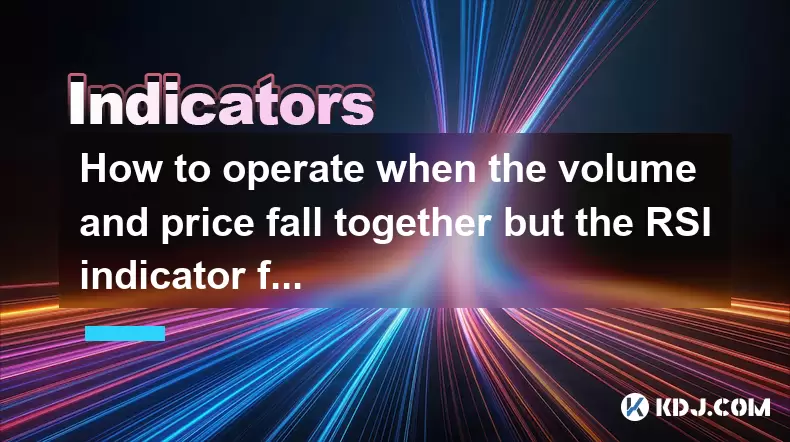
How to operate when the volume and price fall together but the RSI indicator forms a bottom divergence?
Jun 25,2025 at 04:29am
Understanding the Concept of RSI Bottom DivergenceWhen analyzing cryptocurrency price charts, traders often rely on technical indicators to spot potential reversals. One such signal is a bottom divergence in the Relative Strength Index (RSI). This occurs when the price makes a new low, but the RSI does not confirm that low and instead forms a higher low...
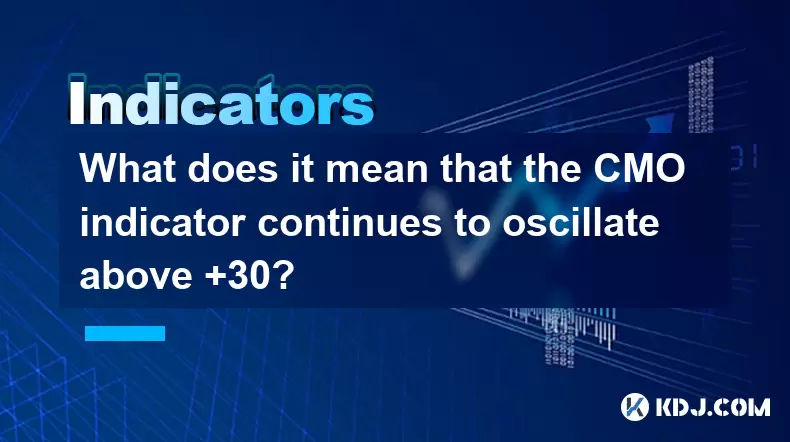
What does it mean that the CMO indicator continues to oscillate above +30?
Jun 25,2025 at 03:29am
Understanding the CMO IndicatorThe Chande Momentum Oscillator (CMO) is a technical analysis tool developed by Tushar Chande to measure momentum in financial markets. In cryptocurrency trading, the CMO helps traders identify overbought or oversold conditions and potential trend reversals. The oscillator ranges from -100 to +100, with values above zero in...

What does it mean that the ATR indicator suddenly doubles after hitting a new low this year?
Jun 24,2025 at 11:57pm
Understanding the ATR IndicatorThe Average True Range (ATR) is a technical analysis indicator used to measure market volatility. Developed by J. Welles Wilder, ATR calculates the average price range between a security’s high and low over a specific period—typically 14 periods. It does not indicate the direction of price movement but rather how volatile ...
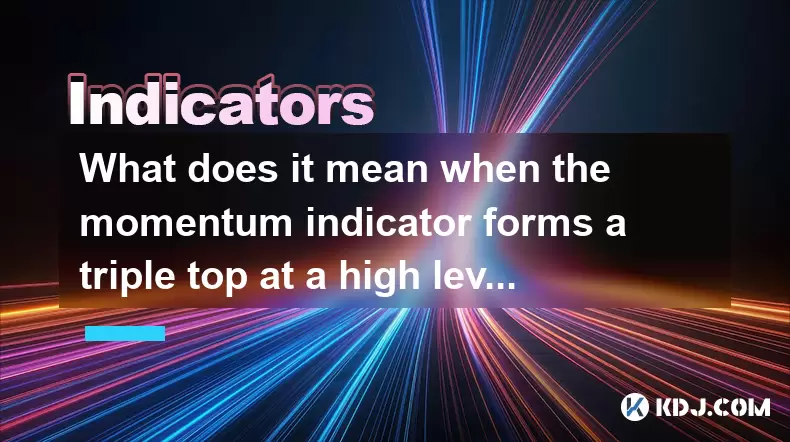
What does it mean when the momentum indicator forms a triple top at a high level?
Jun 25,2025 at 03:15am
Understanding the Momentum Indicator in Cryptocurrency TradingThe momentum indicator is a widely used technical analysis tool that measures the rate of change in price movements over a specified period. In cryptocurrency trading, where volatility is high and trends can reverse rapidly, this indicator helps traders identify potential trend reversals or c...
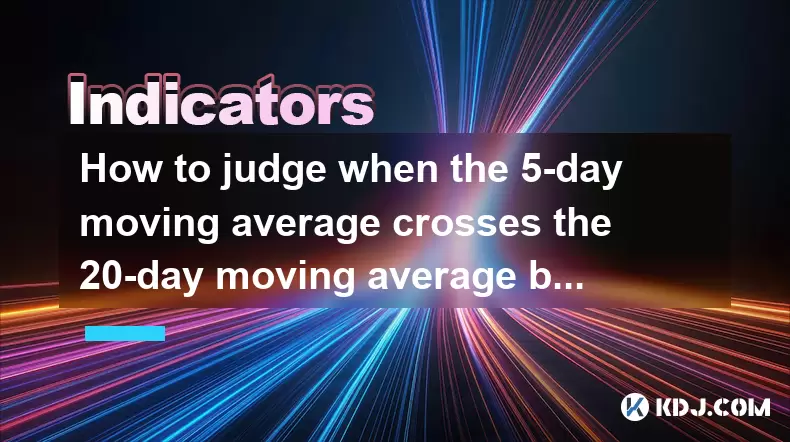
How to judge when the 5-day moving average crosses the 20-day moving average but the RSI shows a top divergence?
Jun 25,2025 at 06:28am
Understanding the Basics of Moving Averages and RSIIn technical analysis, moving averages are essential tools used to identify trends in price movements. The 5-day moving average (MA) is a short-term indicator that reflects recent price action, while the 20-day MA offers a broader perspective over a longer period. When these two lines intersect, it's kn...

What does the divergence between the volatility indicator and the price indicate?
Jun 25,2025 at 06:07am
Understanding the Volatility IndicatorThe volatility indicator is a technical analysis tool used to measure the rate and magnitude of price movements in financial markets, including cryptocurrencies. It helps traders assess whether a market is experiencing high or low volatility, which can influence trading decisions. Common types of volatility indicato...

How to operate when the volume and price fall together but the RSI indicator forms a bottom divergence?
Jun 25,2025 at 04:29am
Understanding the Concept of RSI Bottom DivergenceWhen analyzing cryptocurrency price charts, traders often rely on technical indicators to spot potential reversals. One such signal is a bottom divergence in the Relative Strength Index (RSI). This occurs when the price makes a new low, but the RSI does not confirm that low and instead forms a higher low...

What does it mean that the CMO indicator continues to oscillate above +30?
Jun 25,2025 at 03:29am
Understanding the CMO IndicatorThe Chande Momentum Oscillator (CMO) is a technical analysis tool developed by Tushar Chande to measure momentum in financial markets. In cryptocurrency trading, the CMO helps traders identify overbought or oversold conditions and potential trend reversals. The oscillator ranges from -100 to +100, with values above zero in...

What does it mean that the ATR indicator suddenly doubles after hitting a new low this year?
Jun 24,2025 at 11:57pm
Understanding the ATR IndicatorThe Average True Range (ATR) is a technical analysis indicator used to measure market volatility. Developed by J. Welles Wilder, ATR calculates the average price range between a security’s high and low over a specific period—typically 14 periods. It does not indicate the direction of price movement but rather how volatile ...

What does it mean when the momentum indicator forms a triple top at a high level?
Jun 25,2025 at 03:15am
Understanding the Momentum Indicator in Cryptocurrency TradingThe momentum indicator is a widely used technical analysis tool that measures the rate of change in price movements over a specified period. In cryptocurrency trading, where volatility is high and trends can reverse rapidly, this indicator helps traders identify potential trend reversals or c...

How to judge when the 5-day moving average crosses the 20-day moving average but the RSI shows a top divergence?
Jun 25,2025 at 06:28am
Understanding the Basics of Moving Averages and RSIIn technical analysis, moving averages are essential tools used to identify trends in price movements. The 5-day moving average (MA) is a short-term indicator that reflects recent price action, while the 20-day MA offers a broader perspective over a longer period. When these two lines intersect, it's kn...

What does the divergence between the volatility indicator and the price indicate?
Jun 25,2025 at 06:07am
Understanding the Volatility IndicatorThe volatility indicator is a technical analysis tool used to measure the rate and magnitude of price movements in financial markets, including cryptocurrencies. It helps traders assess whether a market is experiencing high or low volatility, which can influence trading decisions. Common types of volatility indicato...
See all articles
























































































